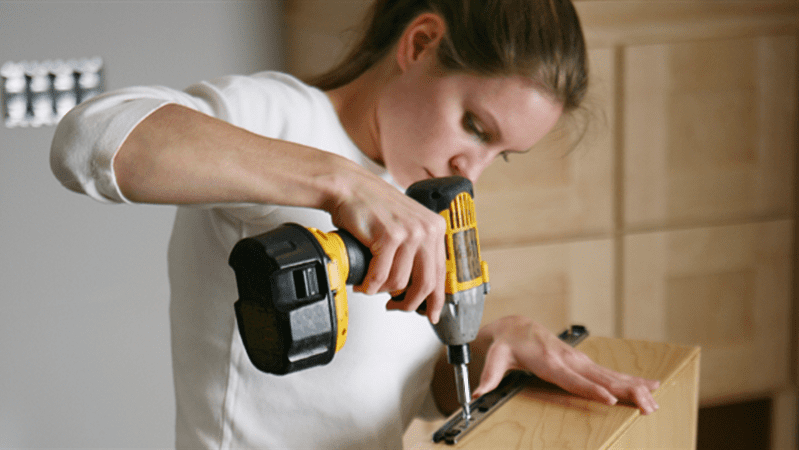Last week, my students built a chair. Well, okay, there are still a few things left to do—countersinking some screws, installing a shelf, and slapping on a coat of paint, but the thing is mostly finished. This project served an actual curricular purpose. I’m teaching life skills—it’s one of the topics my students wanted to study this year, so we had a banker come talk finance with us in January, we’re learning to change a tire in March, and in February, we built a bookshelf chair for the fifth-grade English classes.
I was nervous about this. It’s a language arts class of 24 on-level kids, not some small, elite gifted group. One has emotional-behavior disorders, and a few are frequent flyers in the principal’s office. One can’t walk across the room without tripping over her own feet, so I wasn’t sure that handing her a drill was a good idea. But with the ironclad legal protection of a parent permission slip, I forged bravely onward. Now every kid in the class has used a mitre saw, a power sander, and a drill, and I’ve got a whole list of reasons why you should do the same.
1. The look on your principal’s face.
I told my boss that we were doing this. I said, “We’ll be doing construction in my room next week.” She joked, “I’ll bring my hard hat.” Apparently she didn’t realize I was speaking literally, because she was taken aback when she stopped by to investigate all the noise. So not only did I not really have to ask permission, I didn’t have to beg for forgiveness either! Win-win!
2. It makes your room smell like sawdust instead of armpits.
At least for a few days. I can’t wait until it smells like fresh paint!
3. The kids think you’re a total badass.
I’m shorter than all my seventh graders and I sometimes wear hair ribbons. And now they know that I can wield whirling blades of doom with reasonable aplomb and competence.
4. It hits, like, all the standards.
If your school wants cross-curricular learning, this is the way to go. We did math. There was probably some science. There was definitely a ton of social-emotional learning. And it was all informational literacy. I guess you could get the same effect by assembling a flat-pack piece of Ikea furniture, but the fun-to-frustration ratio would be reversed. (See? I learned how to speak math!)
5. The things you hear yourself say.
“Who hasn’t screwed yet this morning?” “I need a screw over here!” “Anybody got any experience screwing?” And when you’re holding something that could make a substantial hole in human flesh, they barely even giggle.
6. The kids’ reaction.
My kids will forget what a dependent clause is. (Ha ha, just kidding. They’ve already forgotten.) But they won’t forget the day we used power tools in class. And I know, school can’t be like that all the time, but it’s nice to hear things like, “Why don’t we learn stuff like this every year?” Or, “My dad is really excited that I’m learning this stuff.”
7. It brings out the best in the kids.
My biggest troublemaker had a chance to shine when we built this thing. He’s been in trouble off and on all year for bullying and anger issues, as well as not doing his work. But on construction day, he was the star, patiently helping other kids and refusing to criticize the guys who didn’t know what they were doing. He was basically my construction assistant, and he loved it. I don’t know if it’ll last, but it was a breakthrough. My shyest kid fell in love with a mitre saw. And my emotional-behavioral disorder princess? At the end of class, she told me, “I think I want a drill for my 13th birthday.” Buy a DeWalt, honey. It’s a quality product.
Have you ever embarked on a construction project in the classroom? How did it go?

